The Importance of Paper Shredding in the Office Environment
In the modern office, paper shredding is a critical task. It’s not just about decluttering workspaces. Shredding helps prevent sensitive information from falling into the wrong hands. Identity theft and corporate espionage are real threats. A robust paper shredder office policy safeguards against these risks.
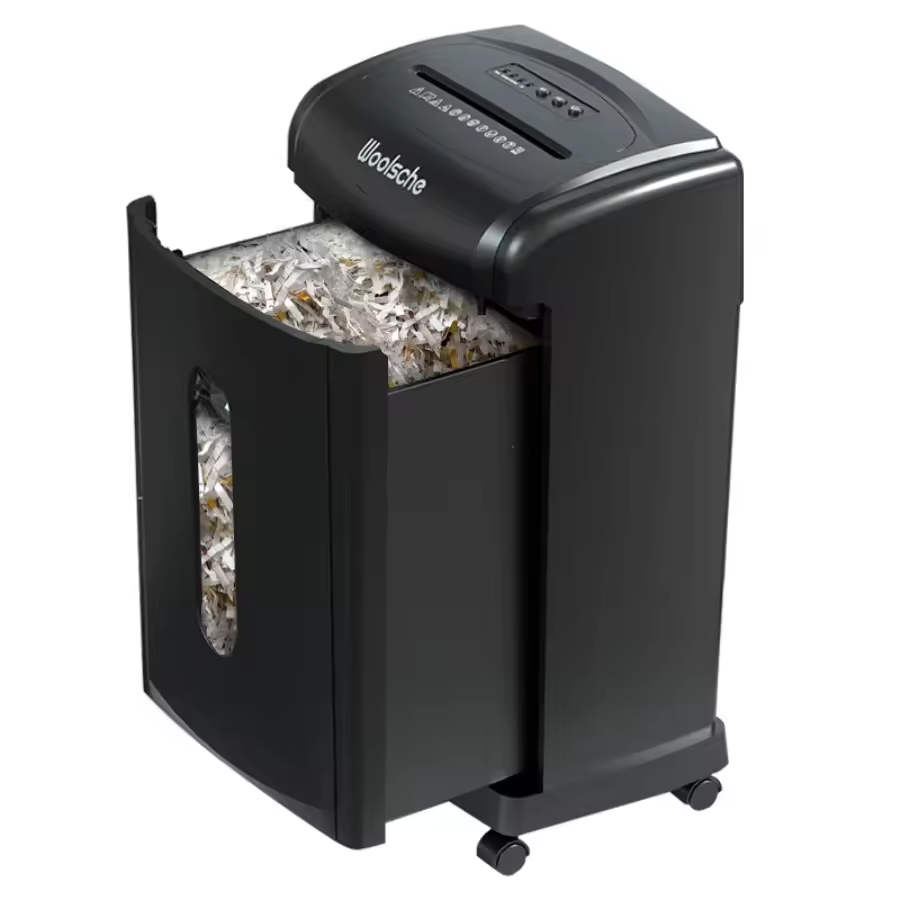
Shredding documents is more than a security measure. It also complies with privacy laws. Many regulations mandate the destruction of confidential information. By shredding paperwork, offices ensure they meet these legal requirements.
But the benefits don’t stop there. Shredding can improve workflow too. It eliminates unnecessary paper, making file management easier. This leads to heightened productivity across teams. An uncluttered office is an efficient office.
Another plus is environmental impact. Shredded paper is easier to recycle. It supports office green initiatives. By shredding, businesses show commitment to sustainable practices.
All in all, implementing a consistent shredding protocol is vital. It protects, complies, streamlines, and sustains. Offices need to understand this to safeguard their interests and reputation.
Different Types of Paper Shredders Available
When selecting a paper shredder for your office, you have several options to consider. Each type of shredder has unique features and is suitable for different shredding needs. Here’s a breakdown of the common types of paper shredders available:
- Strip-Cut Shredders: These are the most basic shredders. They cut papers into long, thin strips. They work fast and can shred large volumes of paper. However, they offer less security as the strips can be reassembled.
- Cross-Cut Shredders: These machines cut paper both horizontally and vertically. They create smaller pieces than strip-cut shredders. This makes document reconstruction much harder. Thus, they provide better security.
- Micro-Cut Shredders: For the utmost security, choose micro-cut shredders. They turn documents into confetti-sized pieces. These are ideal for shredding highly sensitive documents. Their high level of security makes them a top choice for many offices.
- Cardboard Shredders: Some offices need to dispose of cardboard packaging securely. Cardboard shredders are perfect for this purpose. They not only help in recycling but also secure sensitive information on packaging.
- High-Security Shredders: When you need to comply with the highest security standards, these shredders are essential. They create tiny particles that are nearly impossible to piece together.
- Auto-Feed Shredders: These shredders are ideal for convenience. They allow you to stack a batch of papers to be shredded automatically. This saves time and boosts productivity.
Understand your office’s needs, volume of shredding, and security requirements. This will help you decide on the best type of paper shredder office equipment for your workspace.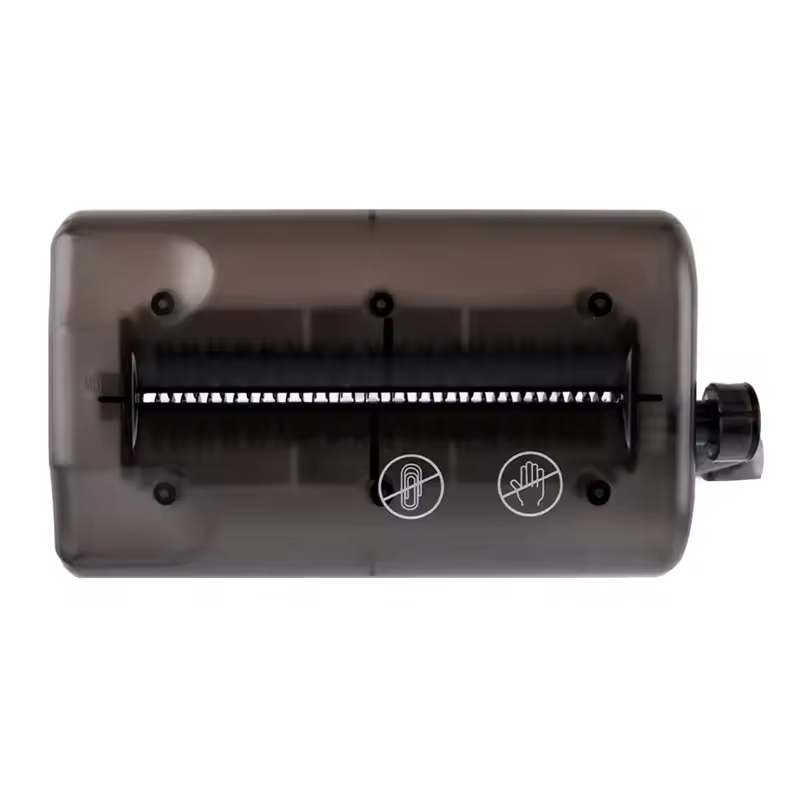
Key Features to Look for in an Office Paper Shredder
When searching for a paper shredder office model, consider several key features. These features will ensure the device meets your office’s needs. Security, speed, capacity, and user-friendliness top the list. Here are the essential aspects to look out for:
- Security Level: The shredder should match your security needs. Assess the sensitivity of documents you’ll shred. Opt for cross-cut or micro-cut shredders for higher security.
- Shredding Speed: Consider how fast the shredder operates. A faster shredder saves time in a busy office environment.
- Sheet Capacity: Determine how many sheets the shredder can process at once. Higher capacity means more efficiency in handling large shredding jobs.
- Waste Bin Size: A larger bin requires less frequent emptying. This is convenient for offices with high volumes of paper waste.
- Noise Level: A quieter shredder minimizes disruption. This is important in shared spaces or open office setups.
- Duty Cycle: Look for a shredder that can handle your office’s workload. It should sustain operation without overheating.
- Auto-Feed Feature: For added convenience, auto-feed shredders allow stacking of papers for automatic shredding.
- Safety Features: Ensure the shredder has safety mechanisms. These prevent accidents during operation.
- Warranty and Service: Check for a good warranty and readily available service. This secures your investment over its lifetime.
Selecting a paper shredder office device with these features will enhance security and productivity. Match the shredder’s features with your office’s specific requirements for the best results.
Steps to Implement a Secure Shredding Process
To maintain confidentiality and compliance, offices must establish a secure shredding process. Here’s a step-by-step guide to ensure the integrity of your document destruction method:
- Develop a Shredding Policy: Craft a clear policy. It should outline what types of documents require shredding. This includes obsolete records, financial statements, and personal employee information.
- Designate Shredding Areas: Set up specific zones for shredding. Place them near printers and copiers for easy access. Secured bins can store sensitive papers before shredding.
- Schedule Regular Shredding: Decide on a routine shredding schedule. This can be daily, weekly, or monthly based on your paper usage. Stick to the schedule to avoid a buildup of documents.
- Choose the Right Paper Shredder Office Equipment: Use the shredder type that matches your security demands. Refer to the ‘Key Features to Look for in an Office Paper Shredder’ section for guidance.
- Train Employees: Make sure all staff understand the shredding process. They should know which documents to shred and how to operate the shredder safely.
- Monitor Compliance: Keep track of shredded documents. Use logs or destruction certificates. This ensures all sensitive documents are disposed of properly.
- Hire Shredding Services for Large Jobs: If your office generates a lot of paper waste, consider professional shredding services. They can handle bulk shredding tasks securely.
- Review and Update Your Process: Regularly assess your shredding procedures. Update them as needed to keep up with changes in regulations or business operations.
By following these steps, you can set up a shredding process that keeps your office running smoothly while protecting sensitive information. This is not just a security measure, it also boosts office productivity by reducing clutter and waste.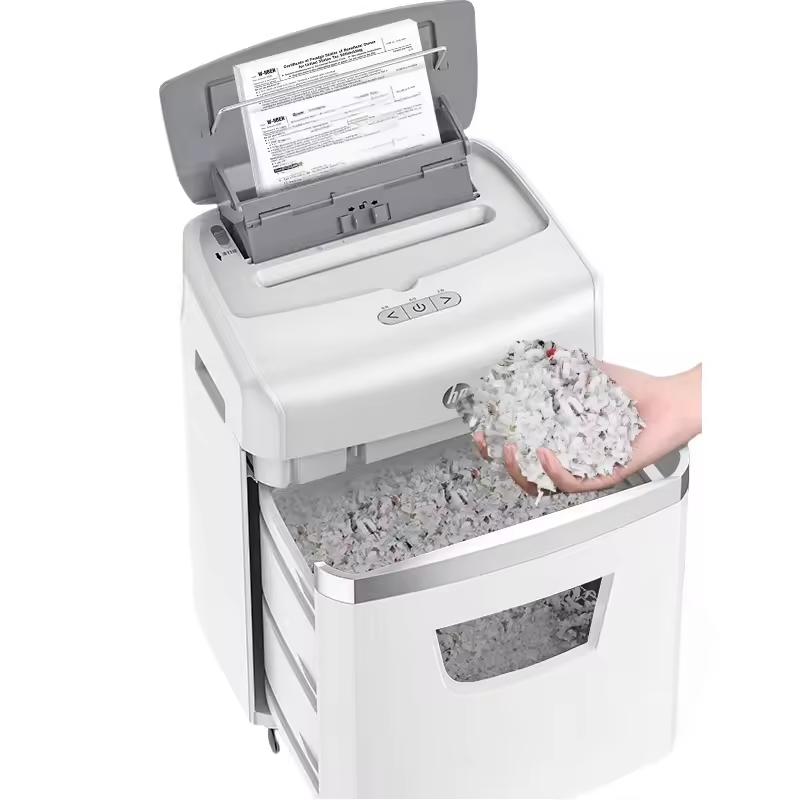
Paper Shredder Maintenance: Ensuring Longevity and Efficiency
To keep a paper shredder office machine in top shape, regular maintenance is key. It helps to ensure both longevity and efficiency, minimising potential disruptions in your office workflow. Here are essential maintenance tips to follow:
- Clean Regularly: Dust off the shredder’s exterior and clear the blades of paper dust and debris. This prevents jams and maintains cutting efficiency.
- Oil the Shredder: Lubricate the shredder blades periodically with shredder oil. This ensures smooth operation and prolongs the life of the blades.
- Empty the Bin: Don’t wait for the bin to overfill. Regularly empty it to avoid jams and keep the shredding process efficient.
- Check for Wear and Tear: Inspect your shredder for any signs of damage or blunt blades. Address these issues promptly to maintain optimal performance.
- Avoid Overfeeding: Stick to the recommended sheet capacity. Overloading the shredder can lead to jams and strain the motor.
- Read the Manual: Understand your shredder’s specific maintenance needs. Each model may have unique requirements and care instructions.
- Use the Right Materials: Only shred materials your shredder is designed to handle. Attempting to shred inappropriate items can damage the machine.
Adhering to these maintenance steps will help extend your paper shredder’s lifespan. It also ensures that sensitive documents are securely destroyed. Remember, a well-maintained shredder is a reliable tool in safeguarding your office against information breaches.
The Role of Shredding in Protecting Sensitive Information
Shredding plays a pivotal part in information security within office environments. Sensitive data, when discarded improperly, can be a gold mine for data thieves. Shredding transforms critical documents into unreadable fragments. This process counters the risk of identity theft and business fraud. Here are three major reasons why shredding is indispensable for protecting sensitive information:
- Data Protection: Shredding ensures that private information remains confidential. Documents containing personal details, business plans, or customer data require secure destruction. This step is crucial in preventing data breaches.
- Legal Compliance: Many laws demand the safeguarding of personal information. Shredding meets legal obligations under privacy regulations. Companies can face penalties if they neglect to properly dispose of sensitive documents.
- Reputation Management: A data breach can tarnish a company’s reputation. Customers lose trust when their data is compromised. Shredding protects the integrity of the business and maintains customer confidence.
To sum up, shredding sensitive documents safeguards against information theft. It locks out unauthorized access and aligns with compliance standards. Moreover, it supports the preservation of corporate reputation. Offices should prioritize shredding to keep sensitive data out of the wrong hands.
Best Practices for Office Shredding: Policies and Training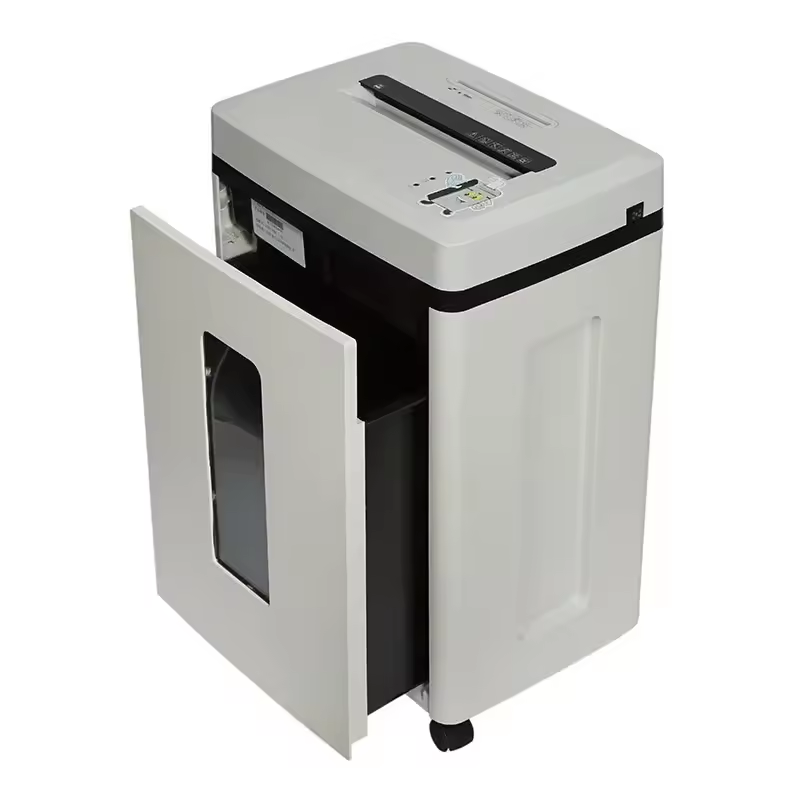
Adopting best practices for office shredding is crucial. These practices ensure the effectiveness and compliance of shredding activities. Here are some key elements to include:
- Establish Clear Shredding Policies: Draft a document shredding policy. Define which documents to shred and when. Share this policy with all employees.
- Set Up Shredding Stations: Place shredders in accessible areas. This encourages regular use by staff. Secure bins should be nearby for sensitive materials awaiting destruction.
- Regular Training Sessions: Conduct training for all team members. Focus on why shredding is important and how to use shredders properly.
- Create a Shredding Schedule: Decide how often shredding should happen. Regularly scheduled shredding prevents pile-ups of sensitive documents.
- Encourage a Clean Desk Policy: Guide employees to keep desks clear of sensitive papers. This minimizes the risk of information leaks.
- Monitor and Log Shredding Activities: Keep records of what gets shredded. This ensures compliance and helps in audits.
- Evaluate Shredding Practices: Regularly check your shredding procedures. Update them to meet new legal requirements or operational changes.
By implementing these best practices, you create a secure and productive office environment. Your team will handle paper shredder office tasks with ease and confidence. Remember that ongoing education and clear policies are the backbone of effective data protection in any office setting.
How to Choose the Right Paper Shredder for Your Office Needs
Choosing the right paper shredder office equipment demands careful thought. It’s crucial for both security and workflow. Follow these tips to make the best choice for your office needs.
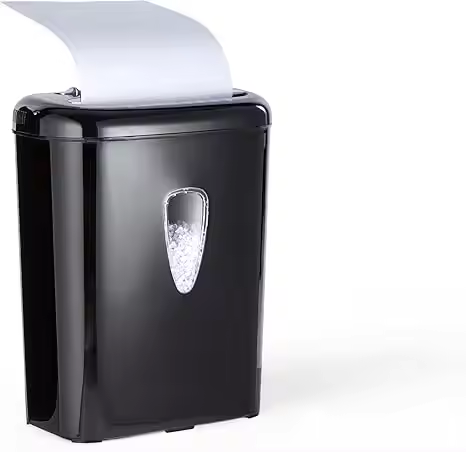
- Assess Security Needs: Consider the sensitivity of the documents you handle. Pick a shredder with the right security level. For top security, go for micro-cut shredders.
- Check Shredder Capacity: Estimate the volume of paper your office shreds regularly. Choose a shredder that can handle your daily throughput without overload.
- Look at the Speed: A fast shredder saves time and improves productivity. Make sure it matches your office’s pace of work.
- Examine Bin Size: Select a shredder with a bin that suits your office’s waste output. Bigger bins mean less frequent emptying.
- Consider the Noise: A low-noise shredder is better for a calm office environment. It causes less distraction and annoyance.
- Review the Duty Cycle: The shredder should withstand your office’s shredding demands. It must operate continuously without overheating or needing a break.
- Check for Auto-Feed Functionality: Auto-feed shredders save time. They let you shred large piles of paper without manual feeding.
- Verify Safety Features: Safety is key in a shared workspace. Look for shredders with built-in safety mechanisms to prevent accidents.
- Evaluate Warranty and Support: Your investment should be secure. Ensure a strong warranty backs the shredder. Good customer service is important too.
By taking account of these factors, you’ll find the right paper shredder office tool. It will meet your needs for security, efficiency, and safety. Remember to match the shredder’s features to the specific needs of your office for optimal results.